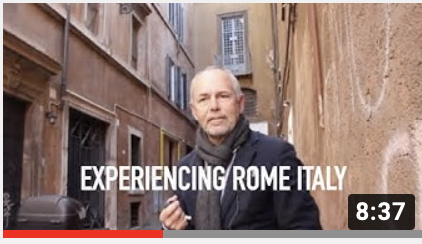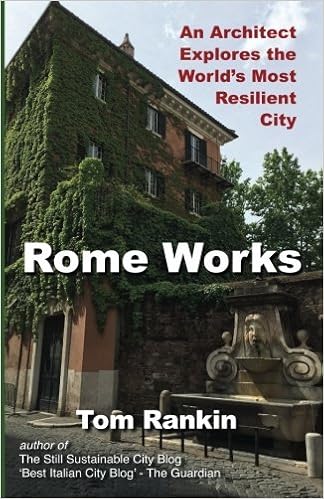Stati Generali: the next ten years in Rome
Earlier this week I stopped by Adalberto Libera’s congress hall in EUR, this time not just to admire the fantastic rationalist architecture but to check out the exhibit of objectives and plans for the Millennium Project and hear some discussion about the future of Rome. The theme “Let’s build the new capital together” was catchy and the area headings such as “Rome, city of environmental sustainability” or “Rome, city of global competition” were certainly admirable.
However, the actual contents were for the most part disappointing. Without going into all of the panels, videos and models on display, there was an abundance of catchphrases and a dearth of hard evidence of effective change: “strategies, renewable energy, sustainable mobility, smart grids, e-mobility, sharing, solidarity” all sound great. And yet the projects presented were vague, recycled, disconnected from one another. Mysteriously the city of music and youth at Tor Vergata was disconnected from the Rem Koolhaas city of youth at Ostiense or the Renzo Piano’s Park of Music at Flaminio. The panel on bikesharing looked great but those of us who try to use it know that it is little more than greenwashing, with few bikes available, poorly maintained, unreliable and unsafe. The flythrough video of Piano’s proposal for new connections between the Auditorium. Villa Glori, and the new bridge over the Tiber was beautiful, especially for the total absence of motorized traffic. Unrealistic. Today the Auditorium parking garage is usually empty but the sidewalks in the neighborhood blocked with parked cars.
The video of the Tor Bella Monica project Leon Krier showed at the end of his bizarre but compelling talk showed a city in the best cutting edge graphic rendering technology, a cross between Pixar and Disney. It looked like Salzburg or Heidelberg, again without hardly a car in site (well, one foreign sports car eerily turns a corner at one point and magically disappears). Krier even confessed that the renderings were made in China, a frightening example of our globalized economy where fake versions of past urban forms are now produced and marketed regardless of local identity or realities (although, hey, you can’t not like nice urban spaces designed for people when the alternative is scary non-urban non-spaces designed for vehicles)
Troubling also was the uniformity of participants at this meeting. If it was about building the new capital together, where were the working class residents, the teachers, the children? The crowd was a sea of men in blue suits and security forces. As an architect I can sense real-estate developers a mile away and my sensors were jumping. I wondered if I had mis-interpreted the new “capital” in the exhibit’s title, not the urban kind but the financial kind.
Outside police vans blocked pedestrian crossings with their engines running; so much for a sustainable pedestrian friendly city. Inside at the bar coffee was served in plastic cups and the bartender laughed when I asked if there was a recycling strategy. The conferences were mediated by two television-style hosts who were expert in carrying out their task of facilitating snappy sound-bites and catchphrases, keeping the pace upbeat and happy, avoiding anything that might seem like debate.
It is certainly better that these events take place than the alternative, silence or pure cynicism. They should be observed closely, attended, critiqued, and above all actively participated. The interests at stake in the bid for the 2020 Olympics are both the personal wealth of a handful of individuals and the collective well-being of future generations of Romans and visitors.



Anybody presenting an alternative?
I understand how improper the usage of the word is, as there’s no real “proposal” to which be “alternative”.
Truly, citizens and architects should join forces to present a “real” plan which will put all of “them” to shame, as they deserve.
LikeLike
Here’s one of many: http://www.calmamobilita.net/home/
Calma sta organizzando un convegno (fine marzo) per affrontare con proposte credibili e fattibili il
Disastro Roma.
Ci vuole, per uscirne, una elaborazione partecipata dalla città e dell’area metropolitana che affronti le seguenti questioni:
– i limiti di Roma Capitale e la necessità di Roma Metropolitana;
– i rapporti tra speculazione immobiliare e mobilità;
– il divieto di consumare ulteriore suolo e invece restaurare la città
– la mobilità come bene comune, quindi trasporto pubblico prioritario
– un centro unico metropolitano di pianificazione e finanziamento dei trasporti
– un’azienda di trasporto locale e subregionale unica e pubblica
– la sicurezza per pedoni e ciclisti
– l’incentivazione dell’uso della bici come mezzo normale di trasporto
– la programmazione di forme di vera intermodalità (ferro, gomma, bici, piedi)
– l’organizzazione della domanda e dell’offerta per forme collettive di mobilità
LikeLike